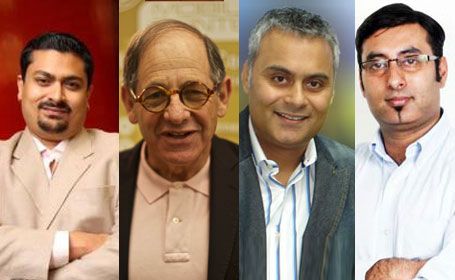
MUMBAI: As India has emerged as the third largest internet market with an expected growth of 150-600 million consumers in the next four years, the need to build a paid model differentiated from the current ad based ones is the focus of most aggregators.
At the Ficci Frames 2013, the session ‘Digital content consumption on the rise: developing a robust paid ecosystem’ highlighted the transition from free to paid models.
The session, moderated by Hungama Digital Media CEO Neeraj Roy commenced with the discussion on what kind of an ecosystem can be developed to drive paid consumers in a scenario where the stringent Trai regulations has signaled the death of mobile transactions.
Mobilium Global CEO Ralph Simon, Catch Media Inc CTO and co-founder Boaz Ben Yaacov, Universal Music MD Devraj Sanyal, Hungama Digital Media COO consumer business and allied services Siddhartha Roy and Reliance Entertainment Digital CEO Manish Agarwal were the panelist.
Agarwal added, “Consumption will be mainly on mobile devices, but we need to think on how we can make money with the regulatory framework constantly changing. There are around 80 per cent consumers who do not want to pay and we need to figure out how to create sustainable models. We are at a cusp where we can shape the industry within the next two years.”
One of the major points that came about during the discussion was that mobile consumers are rising and the market is appealing for aggregators, with 500 million mobile consumers.
Highlighting the change in content consumption, Simon said that people today are moving from single screen to multi-screen devices turning into a ‘Screenager’. Moreover, developing content to have a key relationship with clients will also help determine the kind of models being developed later.
The panelist also highlighted an off-deck method wherein data consumption is not only through telcos but from other platforms as well, which can also act as a driver in developing a robust ecosystem. Kenya is the leader today in mobile payments, allowing users to buy content through minutes.
But with off-deck comprising of a telecom billing and ad funding process, it tends to differentiate from the model in India as it is only a six and a half million dollar market.
An important question raised by Yaacov was will advertisements be able to sustain the markets, if people can watch music and video games for free on platforms like YouTube and more.
He commented, “We do not see an ad based model making money. We aim to build a technology so that consumers can access content easily as they will be willing to pay for that. This in turn will help create sustainable models in the digital ecosystem.”
In 2013, the consumers are asking for more value structures and are willing to pay a specific price to experience the easy access of content. There are also around 68 per cent of consumers gravitating towards video and the DTH ecosystem will help create paid opportunities for digital platforms. But the focus lies on the fact that the models should be paid rather than just ad funded.
Roy pointed out that Korean pop sensation Psy’s Gangnam Style managed to garner around one to two billion views on YouTube but generated only $11 million in terms of revenue for record labels. The question here arose that what are the record labels earning in such a free system.
Sanyal commented, “As a content owner, we do not like free content. But we have been using mediums more to market and promote an artiste rather than making money.”
While the aggregators are adding around 100 million consumers year on year, 90 per cent content will be through mobility devices in the future.
Agarwal stated that there will be users who will pay depending on the kind of content offering being given to them. Moreover, aggregators should also look at their whole service as the package apart from focusing on content. They also need to find a balance between the free and paid models which is not an easy task.
In order to develop a sustainable model for a robust digital ecosystem, the challenge is to look at innovating beyond price as that is the factor which everyone focuses on largely.
Yaacov said, “Technology will allow other funding areas and we cannot find a balance between the two models. It is the consumers who will decide on what model works best for them, and that is why we believe in real time tracking to help understand the choices of the consumers and help fund services.”
While consumers should pay for content in order to develop and sustain the growing digital ecosystem, Sanyal also felt that brands should also pay for content. He highlighted a recent example where Universal Music tied up with HP to launch the ‘HP Connected Music’ service four weeks ago. He stated that HP paid the record label to create the technology platform, which currently features around a million songs. He stressed on the fact that user experience starts from understanding data in a big way.
Apart from that, Sanyal also stated that one of the major barriers in the entire process is the piracy ecosystem, where pirates have no fear. Although industry bodies have taken steps to curb piracy by blocking several illegal ISPs, pirates have found other domains to emerge again and continue with their services.
Roy added that regulations were also acting as a roadblock as they managed to crash the entire CRBT ecosystem, even as it still manages to exist within a limited framework.
While India is still struggling to develop a paid ecosystem and introduce consumers to a paid model, 78 per cent of people in UK are ready to pay for content if discovery of content is enabled. As India moves towards growing digital consumption, the need remains to build a model considering the bandwith along with other factors and not just advertisements.